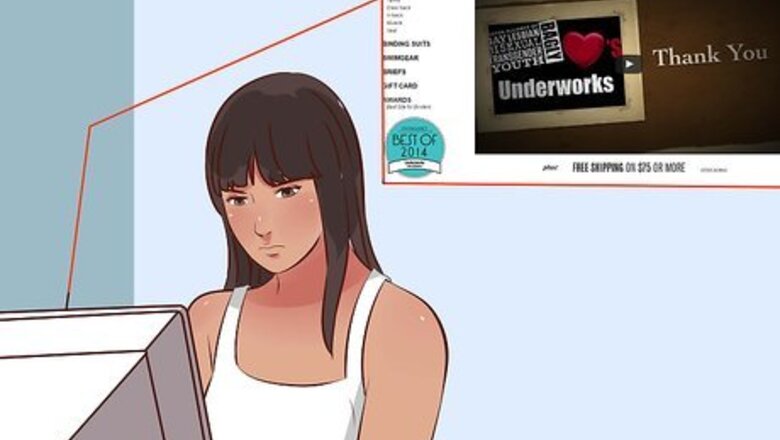
views
Using a Professional Binder
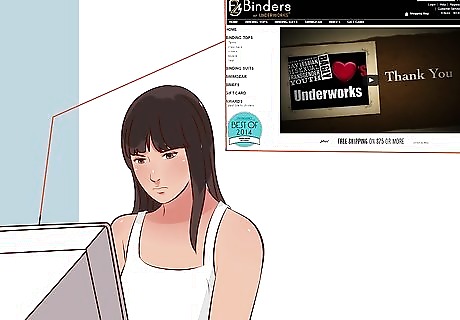
Find out where to buy chest binders. There are several companies online that design binders specifically for trans men. There are also trans men who sell used binders that either no longer fit or aren't of any use to them. You may also be able to purchase a binder from your local sex positive merchant. Binders are not only used for trans men but also for males who have gynecomastia. You can find binders that specialize in helping men with gynecomastia. If you can't afford a binder, there are many programs that you can apply for to receive cheap or free binders. However, most of these exchange programs are geared towards helping low income trans men when they're transitioning.

Choose the right size of binder to wear. If you know your bra size, most merchants will be able to help you convert your bra size to a binder size. If you're buying online, a chart or online conversion tool may be available on the merchant's website. It's important to get the right fit for your binder. A binder is not always comfortable to wear but you should always be able to breathe when you're wearing it. You should never feel restricted to a point that you can't.
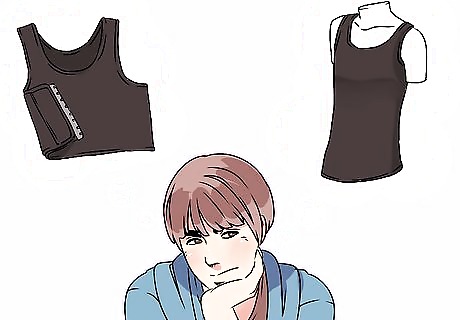
Decide if you want a long or short binder. Short binders end right at your waist, or underneath your bust. Long binders reach several inches past your waist and about an inch before your belly button (depending on your body type). Long binders tend to roll up and may need adjustment, while short binders stay unrolled easier. A binder that rolls can cause unsightly lines to show through your clothing. A way to counteract this problem is to fold up an inch from the bottom of your binder to stop it from rolling. Choose a long or short binder based on your body type and the comfort of your fit. If you have a heavier body type, you may benefit more with a long binder as it will not roll up as often.
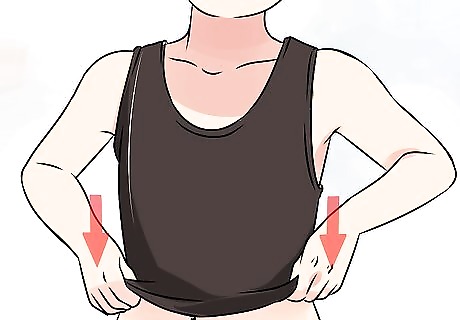
Put on your binder. Binders are put on differently than regular bras or sports bra. Start by: Putting your binder inside out and upside down. Step into your binder and pull the bottom up towards your head to your waist. Use the shoulder sleeves to pull the binder outside. Put your arms through the sleeves. Pull out the bottom of your binder for it to lay flat. Some people will leave it folded to prevent the binder from rolling up when they're out and about.
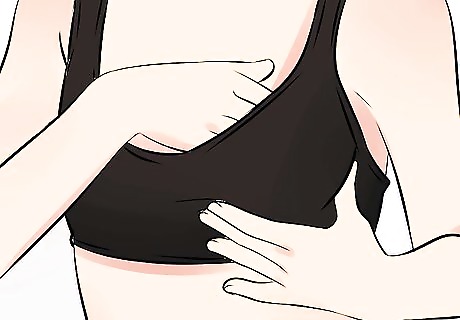
Adjust your chest to fit your binder. After putting on your binder for the first time, you may notice you have something that looks like one boob or a uni-boob. There are several ways to adjust your binder to fit you better: Make your chest look flatter by separating your breasts from each other. Reach your hand into your binder and push your breasts apart towards your arm. Push your breasts down to achieve a flatter look. Reach your hand into your binder and push your breasts down to lay them flat. Trim or alter parts of your binder to prevent bulging or chafing. Your binder may be too long or it may fit too close to your armpit. With a scissors, needle, and some thread, you can alter the binder to fit you better. Alter the fit by adding velcro, spandex, or other materials to your binder. Maybe the bottom of your binder is too snug but everything else fits perfectly or the bottom rolls up all the time. You can add velcro or spandex to the bottom of your binder to help.
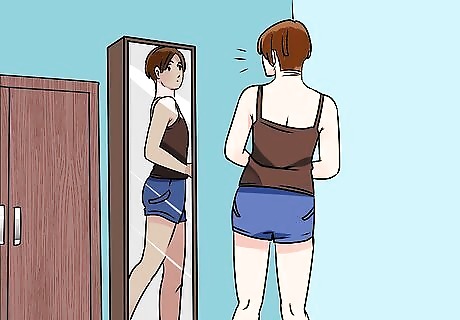
Use tips and tricks to make binder wearing more effective and comfortable. For some people, a binder may not be enough, especially if you have a larger bust size. Or a binder is too uncomfortable or inconvenient to wear. Some tips to better your experience with binder wearing are: Wear a shirt underneath your binder. It makes wearing a binder more comfortable and reduces the possibility of your binder moving around. Wear layers of clothes to get a flatter look. Loose or baggy clothes can help you disguise the look of a bust. Check the mirror for a better view of your chest. It may look bigger when you look down on it. So adjust your appearance based on what you see in the mirror. Move, slouch, sit, and jump around when you're trying on your binder. It may look good while you're standing up, but it might feel or look differently when you start moving. Apply cornstarch or baby powder on your body before putting on your binder to absorb moisture or sweat. Some binders may not be breathable and cause you to sweat in hot weather or when you're exerting yourself. Cornstarch and baby powder can help prevent your skin from getting irritated from the tightness of the binder.
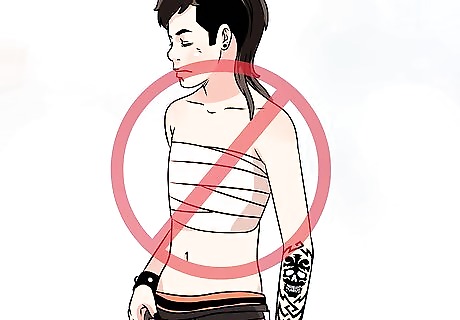
Practice safety while wearing your binder. It is extremely important to wear a binder safely to protect your body from permanent health issues and damage. An extremely tight binder can result in restricted breathing, broken ribs, damage to chest tissue overtime, and cause fluid build-up in your chest. Do not wear your binder for more than 8-12 hours. If you wear your binder for long periods of time, you risk bruising and restricting oxygen to you body. Chest binding is only a short-term solution. Long-term chest binding can cause permanent tissue damage. If you plan to bind your chest daily for any reason, consider looking into safer long-term options. Never sleep with your binder on. Wearing a binder at night can affect your breathing and/or cause skin irritation. Do not put bandages or duct tape over your binder. In fact, never use duct tape or bandages to flatten your chest. These tactics restrict movement and oxygen from entering your body.
Wearing Sports Bras
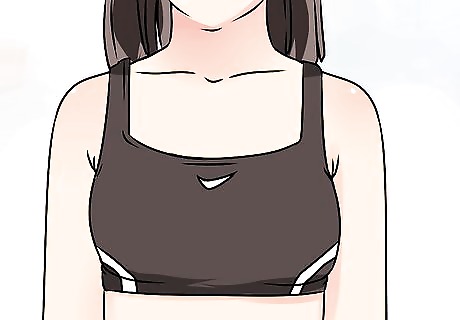
Find a good sports bra. A tight fitting sports bra can do very well to flatten your chest. You can try on a sports bra that is a size smaller for extra flattening. However, it shouldn't be painful to have on and it should never restrict your breathing. When you're trying on your sports bra, take a couple of deep breaths to ensure it's not restricting your ability to breathe. Move around in your sports bra when you're trying it on by bending, slouching, jumping, and sitting. This gives you an idea of how your sports bra will fit and feel when you're in motion. It might feel and look good while you're standing up, but it might feel differently when you're moving in it throughout the day. Look for bras that are made of spandex. Spandex is both stretchy and form-fitting at the same time. Don't wear a sports bra for too long if it is particularly tight. The general rule for most chest binding methods is to wear the garment for no more than 8 hours.
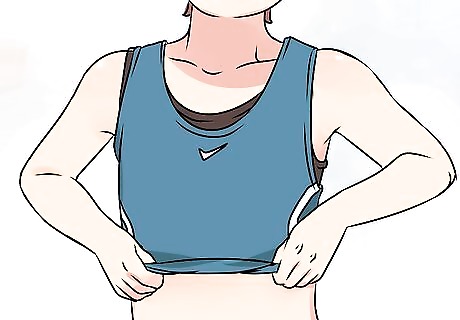
Put on another sports bra. If one sports bra doesn't do the trick, try putting on two to better flatten your chest. You can try: Putting the first sports bra on regularly and the second one on backwards. A larger size for your second sports bra. If the second bra is too hard to put on over the first one, go up a size and see how it fits and feels.

Always be safe when binding your chest. With any method of binding, it's always important to do it safely. Tight or long-term binding can cause permanent tissue damage, respiratory problems, bruising, and broken ribs. Do not use ACE or elastic bandages over your sports bras. Any type of chest binding with bandages can be dangerous, causing damage to your breast tissue, lungs, and ribs. Only bind your chest for a maximum of 8 hours. Get fitted for a sports bra. A professional can help you find a bra that fits you better and flattens your chest for effectively.
Using a Neoprene Waist Trimmer
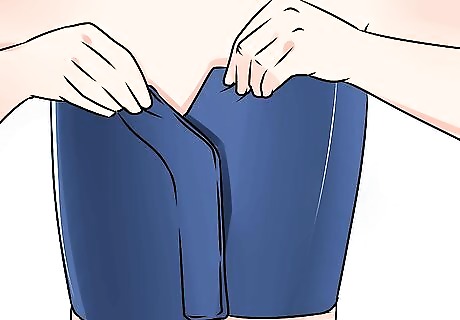
Put the waist trimmer on your chest. Wrap it around so that the velcro fold falls under one of your arms. Neoprene waist trimmers work as compression wear to improve blood circulation for people who are exercising. They are also worn to give a better and trimmer-looking waist for people who aren't.
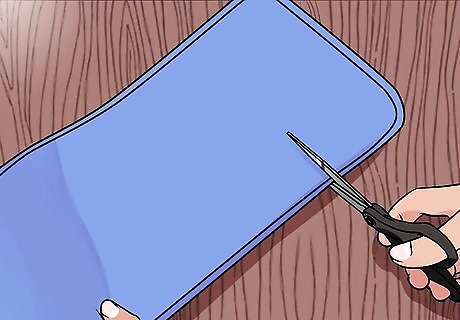
Cut the trimmer to fit your chest. If your waist trimmer is too long for your chest, cut the end without the velcro with scissors to fit your bust. You don't want to double wrap your chest which could create the opposite effect you want. If the trimmer is poking at your sides or under your arm, cut the corners of the trimmer into a smooth curve with scissors.
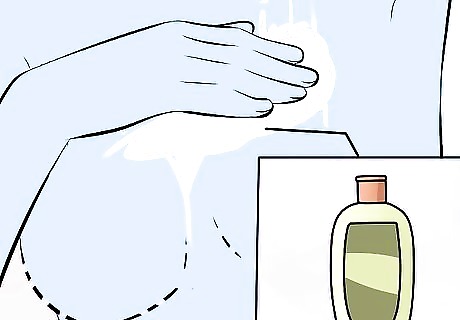
Apply lotion and baby powder to reduce irritation. The neoprene trimmer can cause chafing and extra moisture to build up on and around your bust. Sprinkle from baby powder before wearing your trimmer to help absorb the excess moisture. Put on lotion after you take off your trimmer regularly to protect your skin from chaffing and drying out. Don't put on lotion and baby powder at the same time or while you're wearing your trimmer. You could damage your trimmer and the combination of lotion and powder could make a paste.
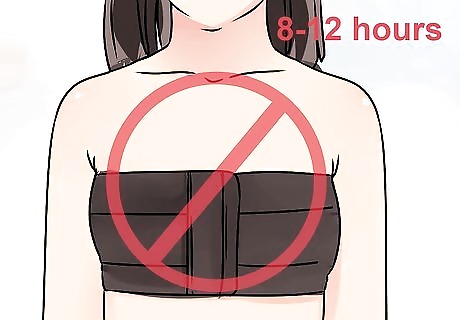
Practice safety while wearing a waist trimmer as a binder. It is extremely important when binding your chest to do it safely and protect your body from permanent health issues and damage. An extremely tight trimmer can result in restricted breathing, broken ribs, damage to chest tissue over time, and cause fluid build-up in your chest. Do not wear a trimmer for more than 8 hours. If you wear your trimmer for long periods of time, you risk bruising and restricting oxygen to your body. Never sleep with your trimmer on. Do not put bandages or duct tape over your trimmer. In fact, never use duct tape or bandages to flatten your chest. These tactics restrict movement and oxygen to enter to your body.
Using Other Methods
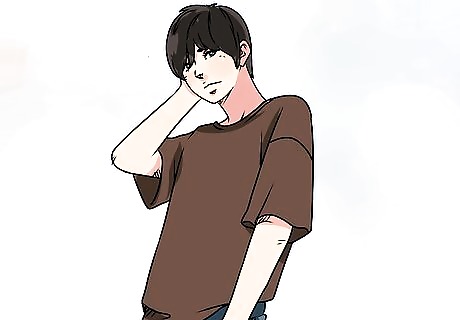
Layer shirts over your binding. This is very effective if you've already bound your chest. It is also an alternative if you don't have anything to bind with. A tight t-shirt or tank top under some loose shirts or a button up can make your chest look smaller.
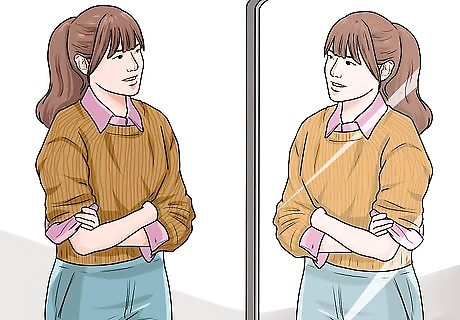
Wear clothes that will draw attention away from your chest. Alternatively, some clothing may also make your chest appear flatter. You can do this either in conjunction with layering or on its own. Wear patterns or colours that distract the eye from your chest. Shirts with regular patterns (like plaid) can emphasize the fact that there's something underneath, whereas irregular patterns, like camouflage, will break up outlines and make them harder to see. Depending on the shirt, shirts with a logo right across your chest may make your bust more or less noticeable. Details that cover the entire shirt are stiff and will make your front appear flatter. Darker colored shirts hide shadows to make your chest seem smaller. Wear scarves, vests, and ties. These garments help cover or distract others from looking at your chest. Wearing clothes with pockets on the chest. Instead of looking at your chest, the eye may be drawn to your pocket. This is most effective if the shirt is loose hanging. Wearing hoodies. Hoodies are usually quite loose fitting. An oversized hoodie over a tight tank can hide your chest quite well.
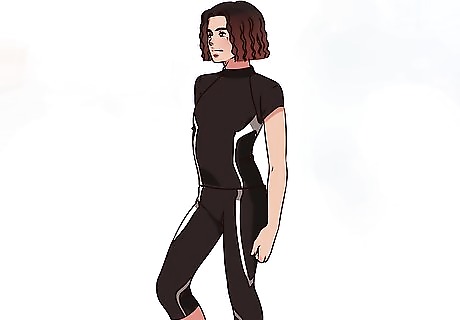
Wear sports compression wear. Sports compression wear is mainly worn to improve blood circulation when exercising or to help relieve tension in muscles after working out. These form-fitting garments can be found in your local sportswear retail store. The same effect can be achieved by wearing a tight swimming suit top. However, the swimming suit might need to be several sizes smaller for it to take effect and trimmed along the elastic hems to relieve pressure on your extremities.
















Comments
0 comment